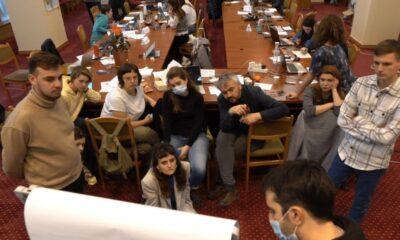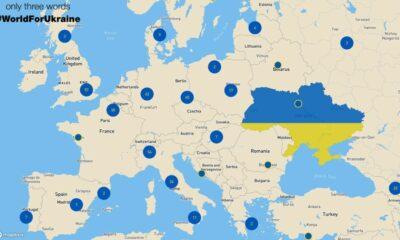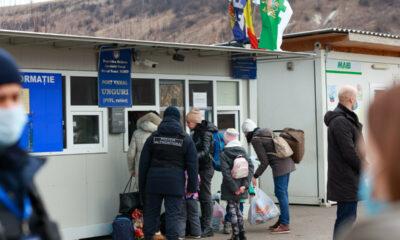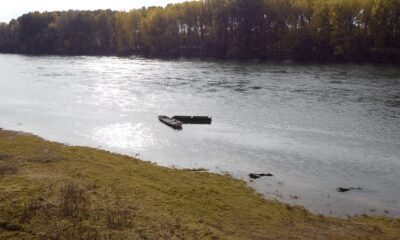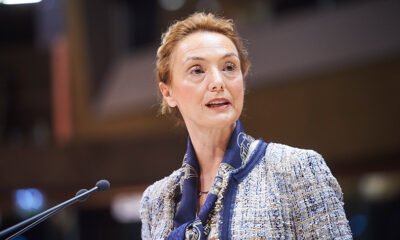Economy
Kremlin renews its focus on the contest for Turkmen gas
Reading Time: 4 minutesOn December 22 in Ashgabat, Russian President Dmitry Medvedev and his counterpart in Turkmenistan Gurbanguly Berdimuhamedov witnessed the signing of documents on the bilateral gas trade and transportation. The documents mark the end of Russia’s punitive, nine-month halt of gas imports from Turkmenistan. The halt inflicted severe losses on Turkmenistan’s revenues.
By Vladimir Socor
Russia Resuming Gas Imports From Turkmenistan on a Small Scale
On December 22 in Ashgabat, Russian President Dmitry Medvedev and his counterpart in Turkmenistan Gurbanguly Berdimuhamedov witnessed the signing of documents on the bilateral gas trade and transportation. The documents mark the end of Russia’s punitive, nine-month halt of gas imports from Turkmenistan. The halt inflicted severe losses on Turkmenistan’s revenues.
However, Russia’s monopsony is now lost thanks to the opening of Turkmenistan-China and Turkmenistan-Iran pipelines in December (EDM, December 15, 16, 18). Russia is returning in a diminished role to an intensifying contest for Turkmen gas.
Gazprom’s Vice-President Aleksandr Medvedev and Turkmengaz Chairman Nury Muhammedov signed the sale-and-purchase agreement in the presence of the two heads of state (Interfax, December 22, 23). According to a subsequent announcement by Gazprom spokesman Sergey Kupryanov, deliveries would start on January 9, rather than January 1 (Interfax, December 31).
Under the agreement, Turkmenistan would deliver “up to” 30 billion cubic meters (bcm) annually to Russia from 2010 onward. However, the agreement does not specify the delivery volume for 2010, let alone subsequent years. Nor does the agreement envisage any time-frame for reaching the nominal 30 bcm target. According to Russian business press reports, Gazprom’s 2010 budget has earmarked funds for purchasing only 10.5 bcm of Turkmen gas this year (Vedomosti, December 23).
Gazprom’s purchase price for Turkmen gas is not disclosed officially. The new agreement pegs that price to the oil-products basket, potentially approximating European netback prices for Russian-delivered gas. According to unofficial reports, Gazprom’s purchase price is anticipated to range from $220 to $250 per one thousand cubic meters of Turkmen gas during 2010 (Vedomosti, Vremya Novostei, December 23).
President Medvedev claimed at the signing ceremony that this agreement is not a new one, but merely updates the 2003 Russian-Turkmen agreement on the gas trade for the period 2004-2028. Gazprom’s official announcements follow the same line and the document itself is billed as “amendments and addenda to the basic contract” of 2003. Such claims seek to maintain the illusion that Russia retains some kind of priority claim on Turkmenistan’s future gas production.
That 25-year agreement of intent –misrepresented as a “contract” by Gazprom to discourage European involvement with Turkmenistan– had envisaged Turkmen gas deliveries to Russia rising from some 40 bcm in 2004 to 90 bcm annually from 2010 onward. Russia, however, proved unable to implement that agreement, thereby implicitly invalidating it. Gazprom imported some 45 bcm of Turkmen gas per year on average, downscaled that to 42 bcm in the contract for 2009, and stopped unilaterally the import of Turkmen gas in early April 2009 due to falling demand in Russia and Europe. Consequently, Russia imported only 11.3 bcm of Turkmen gas in 2009, all of it until early April (ITAR-TASS, December 22; Vedomosti, December 23).
Furthermore, the arrangements for 2010 reduce Russia’s intake of Turkmen gas to a fraction of what it was, without stating an intention to revert to the former volumes, let alone the former projections. Those projections at 90 bcm per year far exceed pipeline capacities at Gazprom’s disposal in Central Asia. For all these reasons, Gazprom would have been in massive breach of its contract with Turkmenistan, had the 2003 framework agreement been a “contract” as claimed.
Also on December 22, Presidents Medvedev and Berdimuhamedov witnessed the signing of a document of intent on joint pipeline construction projects. One project, the Caspian coastal pipeline, would run from western Turkmenistan’s gas fields via Kazakhstan to Russia. The other project, the East-West pipeline, would connect eastern Turkmenistan’s gas fields with western Turkmenistan. There are no specifics about throughput capacities, companies involved, investment costs, or ultimate export destinations for either project (Interfax, December 22, 23).
The Caspian coastal pipeline forms the subject of an earlier agreement of intent and an inter-governmental agreement, each of them signed during 2007 by Russia with Turkmenistan and Kazakhstan. Projected at 30 to 40 bcm annually, that line was to increase dramatically the overall capacity of the Central Asia-Center pipeline system, enabling Russia to maximize its intake of Turkmen gas in the future (though well behind the schedule of the 2003 agreement of intent). Russia has been unable to move that project off the ground thus far. If built, the Caspian coastal pipeline could absorb the gas production of international companies from the Caspian offshore and send that production to Russia, instead of the planned trans-Caspian route to Azerbaijan and southern corridor to Europe.
The East-West pipeline across Turkmenistan would carry gas from the country’s supergiant fields to the Caspian shore. Depending on who would finance and build it, that line could plug either into the Caspian coastal pipeline bound for Russia, or into a trans-Caspian pipeline bound for Europe. The Kremlin had initiated the East-West pipeline project on its own terms and proposed it to Berdimuhamedov. The Turkmen president, however, announced in April 2009 an international tender for bids to construct that pipeline. Many bids are said to have been registered since then.
Russia’s continuing quest for Turkmen gas –and apparent readiness to pay realistic prices for it– reflects Moscow’s anticipation of shortfalls in Russian gas production in the post-crisis recovery period. Those shortfalls would affect Gazprom’s capacity to meet export commitments, requiring a substantial offset through imports from Turkmenistan. In the short term, Russia is content with importing relatively small volumes of Turkmen gas at 10 bcm this year, while leaving open the possibility of importing “up to” 30 bcm if and when European demand rebounds. However, China and even Iran are vying with Russia for the existing and future volumes of Turkmen gas exports, while international companies such as the German RWE proceed with development offshore.
Economy
Moldova will receive a disbursement of 36 million euros as part of the the Economic Recovery Plan
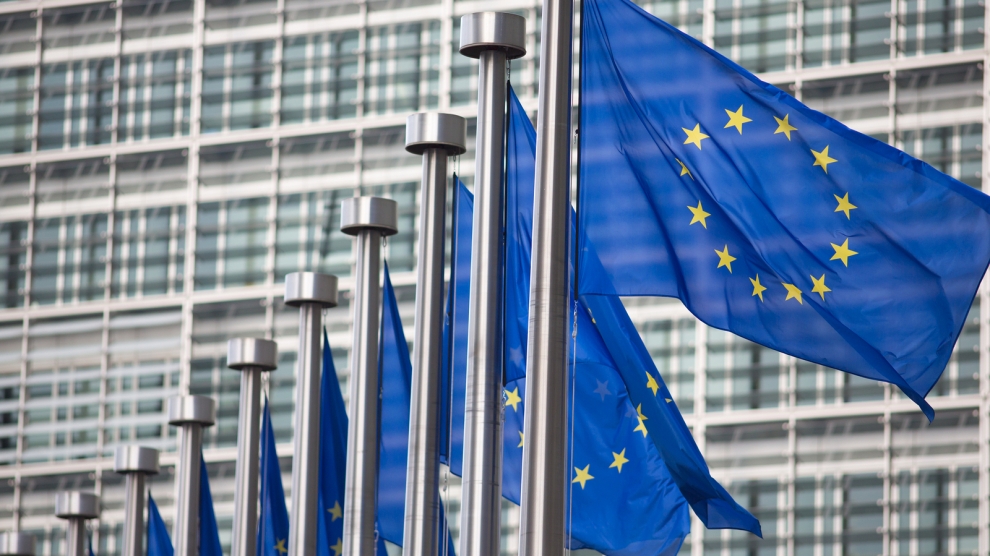
This week, the European Commission approved the disbursement of 36 million euros in grant money for the Republic of Moldova. The announcement was made by Deputy Director-General for Neighbourhood Policy and Enlargement Negotiations at the European Commission, Katarina Mathernova, who paid an official visit to the Republic of Moldova between September 13-15, together with Managing Director for Russia, Eastern Partnership, Central Asia, Regional cooperation and OSCE, at the European External Action Service, Michael Siebert.
The EU officials had meetings with President Maia Sandu, Minister of Foreign Affairs and European Integration, Nicu Popescu, Speaker of Parliament, Igor Grosu, Prime Minister of the country, Natalia Gavrilita, as well as key representatives of Government, international financial institutions and the civil society, according to a press release issued by the Delegation of the European Union to the Republic of Moldova.
Beside such topics as the EU-Moldova relations and prospects, the priorities of the reform agenda of the new Moldovan Government, preparations for the Eastern Partnership Summit at the end of the year and the Transnistrian conflict settlement, the officials also discussed the EU assistance in support of reforms and the Economic Recovery Plan for Moldova, which was announced in June with a total EU support of 600 million euros over the next 3 years.
“The first measures under the Economic Recovery Plan will shortly materialize, with the expected disbursement of 36 million euros in grant money under budget support programmes to support the authorities’ efforts to fight against the consequences of the pandemic. Moldova can count on EU’s assistance on its path to reforms and to recovery, bringing tangible results to citizens,” Katarina Mathernova stated.
The plan is based on assistance provided by the European Union through various bilateral and regional instruments, aiming to mobilize the funds in the form of grants, loans, guarantees and macro-financial assistance.
“The Economic Recovery Plan for the Republic of Moldova involves much more, not just this financial support provided immediately. It must help digital transformation, strengthen infrastructure, energy efficiency, education and support small and medium-sized enterprises,” the EU official also said.
As Prime Minister Natalia Gavrilita informed, “The Economic Recovery Plan and the 5 flagship initiatives for Moldova in the Eastern Partnership will directly contribute to the reform and consolidation of institutions, stimulate long-term socio-economic development, bring direct benefits to citizens, and unleash new economic opportunities through promoting the green agenda and digitization. Small and medium-sized enterprises (SMEs) have been hit hard by the crisis. Promoting and diversifying access to finance and reducing collateral requirements will be essential in supporting economic operators. We are grateful to the EU partners who will launch two programs to support 50 000 independent Moldovan SMEs to adapt to the new conditions.”
President of the Republic of Moldova, Maia Sandu, welcomed the decision of the European Union to disburse about 745 million lei in grant money, as the official page of the President’s Office announced. “EU support comes after a long period of freezing of European assistance, caused by former governments. We managed to relaunch the political dialogue with the European Union and resume financial assistance. The Republic of Moldova is gradually regaining the trust of its strategic partners. This European support is also a signal of encouragement for the new Government team in its commitment to clean up the institutions, fight corruption and launch development programs in the country,” said Maia Sandu.
Photo: unknown
Economy
Romania and Moldova signed a partnership memorandum pledging to cooperate in promoting their wines
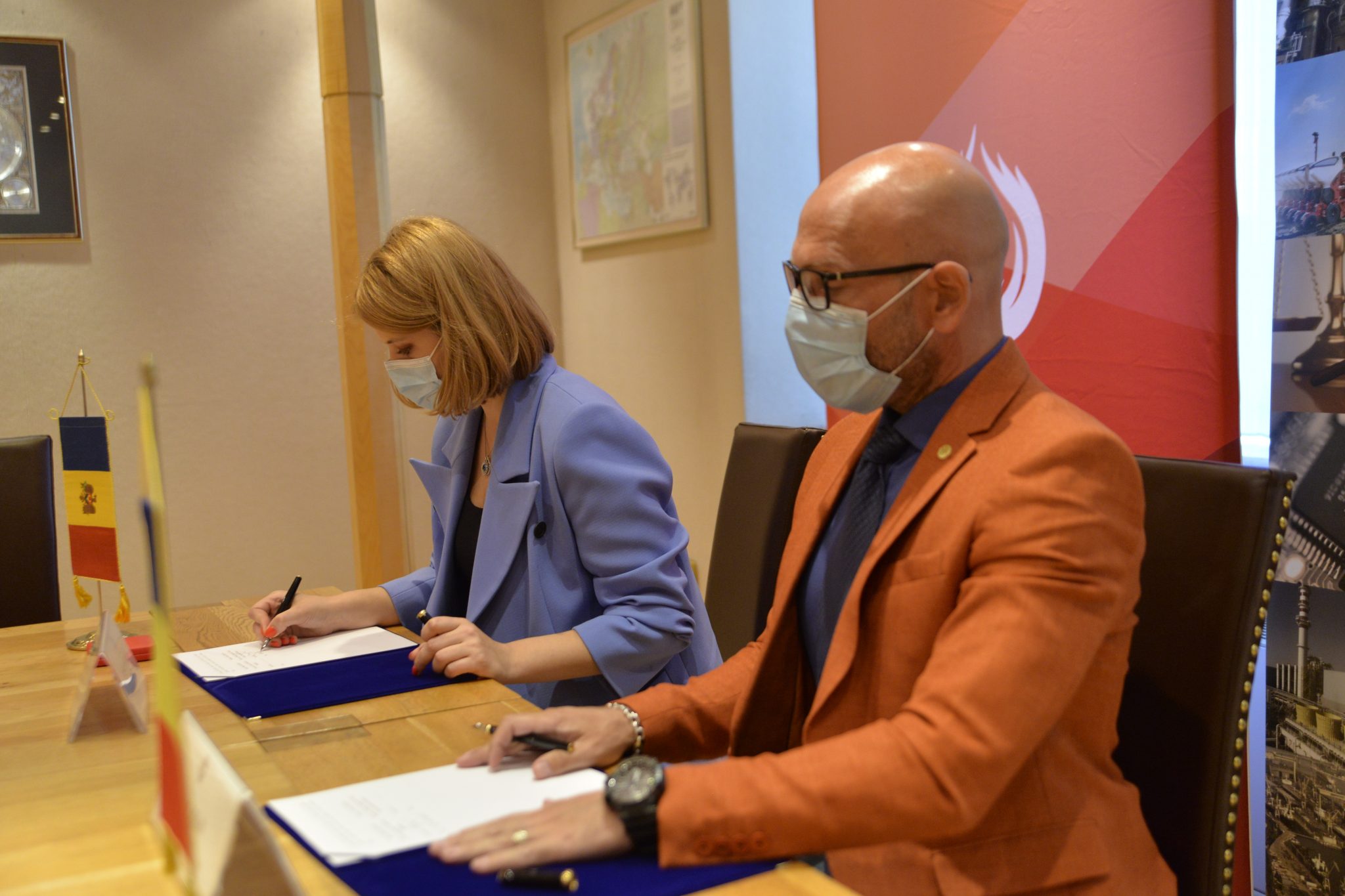
The Chamber of Commerce and Industry of Romania (CCIR) and the National Office for Vine and Wine (NOVW) of the Republic of Moldova signed, last week, a memorandum of cooperation on organizing joint promotional activities in the markets of common interest, as the CCIR announced.
China, Japan or the USA are just some of the markets targeted by the Romanian and Moldovan institutions. The memorandum also involves advertising activities for wines from common indigenous varieties, promoting the oeno-tourist region, developing a tourist route in the two states, exchange of experience, study visits, and mutual support in identifying new export opportunities. “We are very confident that this collaboration between our organizations will lead to sustainable economic growth and a higher degree of well-being among Moldovans and Romanians,” claimed Deputy Secretary-General of CCIR, Bogdan Visan.
On the other hand, Director of the NOVW, Cristina Frolov, declared that no open competition with Romania is aimed at the governmental level of the Republic of Moldova. “This request for collaboration is a consequence of the partnership principle. Romania imports 10-12% of the wine it consumes, and we want to take more from this import quota. Every year, the Romanian market grows by approximately 2.8%, as it happened in 2020, and we are interested in taking a maximum share of this percentage of imported wines without entering into direct competition with the Romanian producer,” the Moldovan official said. She also mentioned that Moldova aims at increasing the market share of wine production by at least 50% compared to 2020, and the number of producers present on the Romanian market – by at least 40%.
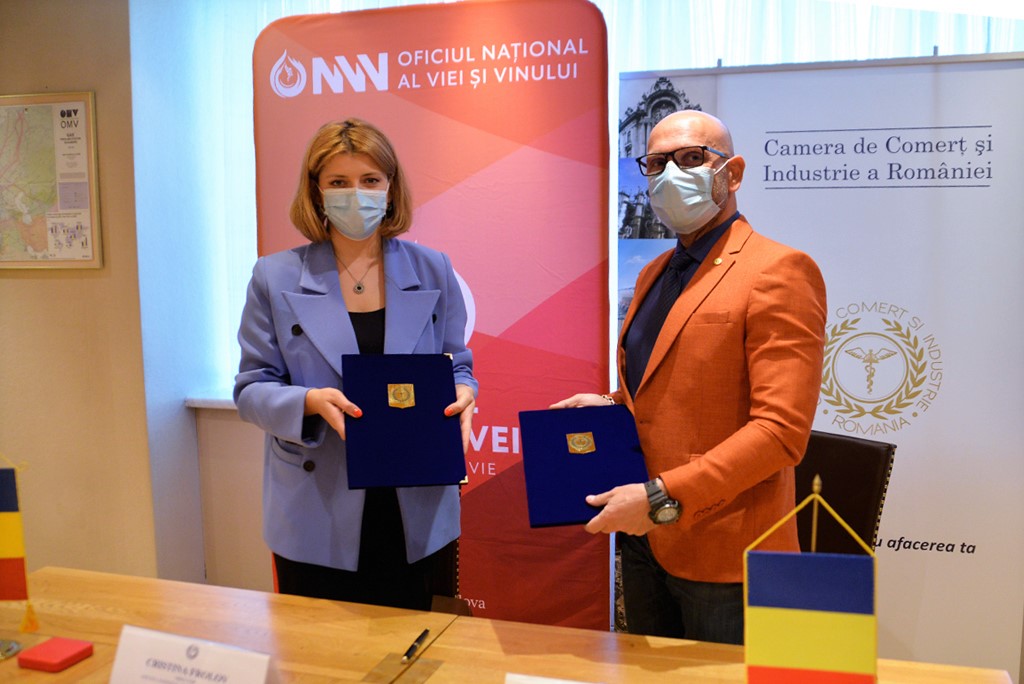
Source: ccir.ro
**
According to the data of the Romanian National Trade Register Office, the total value of Romania-Moldova trade was 1.7 billion euros at the end of last year and over 805 million euros at the end of May 2021. In July 2021, there were 6 522 companies from the Republic of Moldova in Romania, with a total capital value of 45.9 million euros.
The data of Moldova’s National Office of Vine and Wine showed that, in the first 7 months of 2021, the total quantity of bottled wine was about 27 million litres (registering an increase of 10% as compared to the same period last year), with a value of more than one billion lei, which is 32% more than the same period last year. Moldovan wines were awarded 956 medals at 32 international competitions in 2020.
Photo: ccir.ro
Economy
Moldova’s hope to be a top walnut exporter and its main difficulties
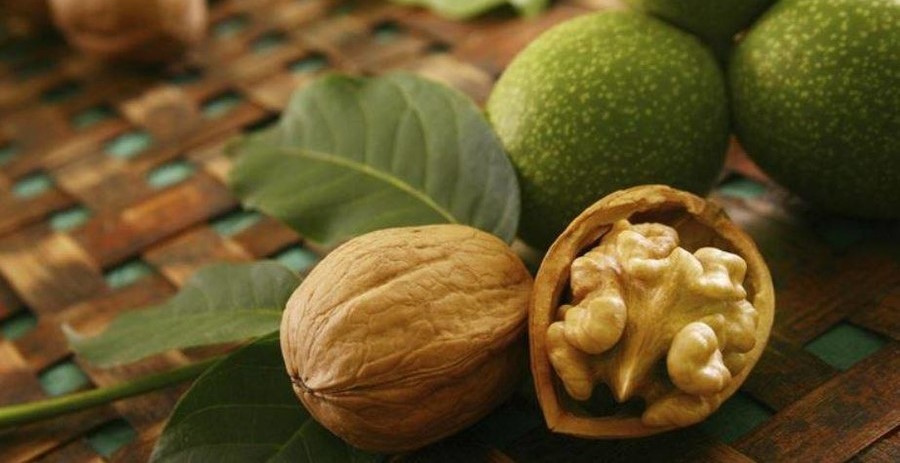
The Republic of Moldova has perfect weather conditions for growing walnut trees, that creating a great potential of walnut production and trade, especially on international markets, where the demand is way higher than the product’s supply. National and international experts believe that the country’s walnut production industry is on the verge of important transformations, which could lead to increased yields, quality and competitiveness worldwide.
According to authorities, Moldova exports 34-35 thousand tons of walnuts in shell, which is about 7% of the total export of fruit and 5% of the total export of horticultural products. The export value is assessed as being $120 million, that being 57-60% of the total fruit export value and about 50% of horticultural export value. Most of walnut crops are exported to the EU countries, such as France, Germany, the Netherlands, Romania and Austria. The country’s exports were among the world’s top 10 when it comes to the highest dollar value of the product during 2020.
Viorel Gherciu, Minister of Agriculture and Food Industry, pointed out that the production in the domestic walnut industry has increased by 55% in the last five years, which ranks Moldova among the main producers in the world.
“The biggest opportunity for this industry is that we are in the geographical proximity of the largest walnut import area in the world, which is the European Union, with almost 40% of total imports in the world. We are on the EU border, with privileged relations, with an Association Agreement. We already enjoy a good relationship in working with European importers, they trust our processors. A very close collaboration has been created and this is, in fact, the guarantee for those who invest in the area,” claimed the president of the Walnut Producers Association, Oleg Tirsina.
The data provided by the National Bureau of Statistics show that there are 34.7 thousand hectares of walnut plantations in the country. 20.90 hectares are represented by orchards. 75% of planted orchards are formed of old varieties trees. 30-35% of the exported production comes from orchards, the rest comes from individual farmers and plantations along the roads. This means that the quality of walnut production is not at its maximum potential. Developing commercial plantations through orchards modernization and extension of walnut varieties would provide double yield and better quality, experts say.
Governmental support in the form of subsidizing solutions, foreign investments and credit options are indispensable for the industry development. One of the financing options is the credit line of the European Investment Bank Project. Since 2016, 15 producers and processors of nuts, almonds and hazelnuts have benefited from these loans with the total amount of investments worth 8.7 million euros. A further extension of the project would provide another 60 million euros for the modernization of the horticultural sector in general and for harvesting organic walnuts in particular.
Photo: heymoldova.com


